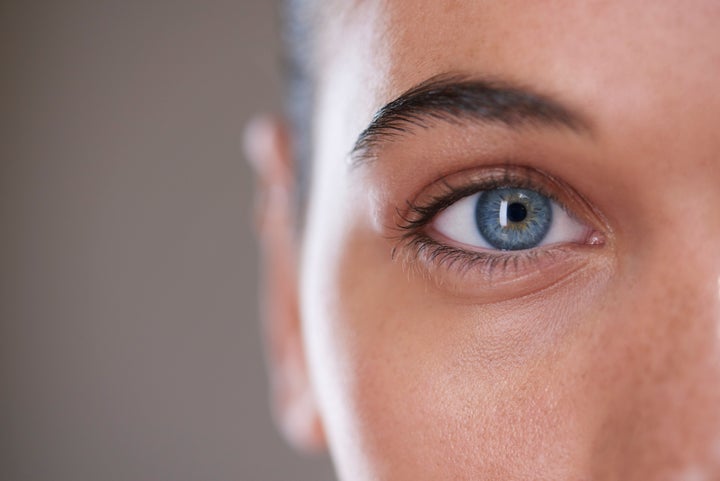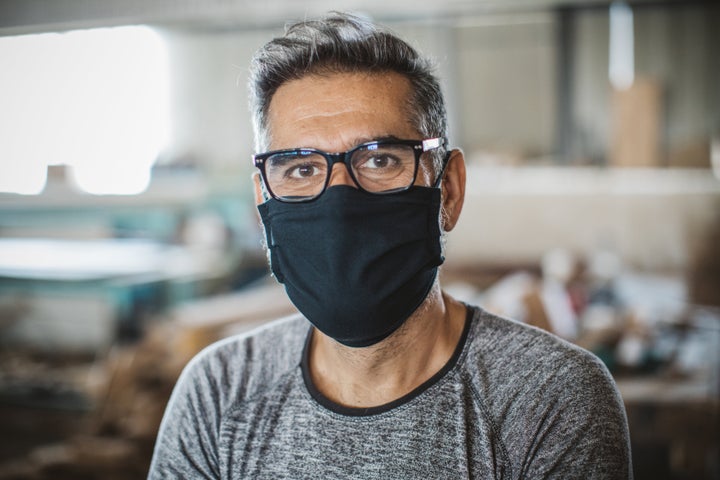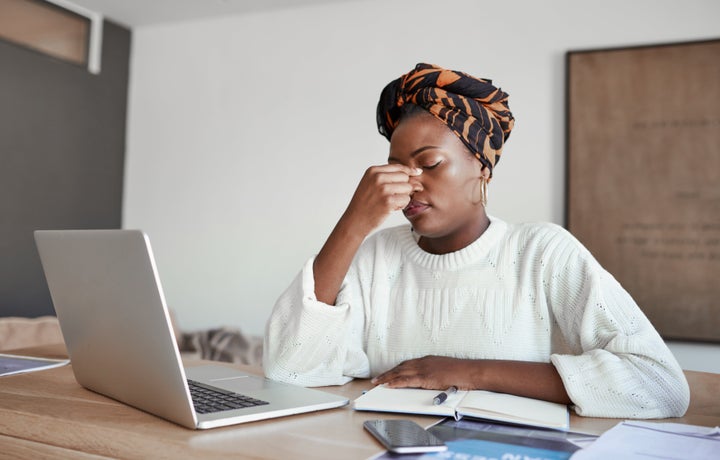
Add the amount of time you spend at home to your time spent in front of a screen. Multiply that by the number of hours you wear a mask every day. Then subtract the pre-pandemic stress relief methods no longer at your disposal, and what do you get? According to eye care providers, an influx of eye conditions.
It turns out the particular combination of pandemic-fueled lifestyle changes we’ve had to make are putting increased strain on our eyes, while pandemic restrictions are leaving us short of ways to reduce the pressure we’re putting on them. Cue ocular drama.
But even if you’re not experiencing any symptoms or your scratchy eyes can easily be remedied with the occasional eye drop, one thing you should keep on the books despite restrictions is your annual eye exam.
“The reality is eye doctors’ offices are very hygienic and people shouldn’t be fearful to have their eyes checked,” said Brian Boxer Wachler, a Beverly Hills board-certified ophthalmologist. “Older people especially are at higher risk of glaucoma, macular degeneration and cataracts, which are ‘silent’ robbers of vision, and eye exams can detect these in early stages.”
Take note of the following eye conditions you’re more prone to thanks to the pandemic, and check in with your eye care provider right away if any of the following conditions and symptoms sound (look?) familiar.
Nearsightedness
In the last year, we’ve spent an increased, and continuous, amount of time in front of a computer screen with infrequent breaks — and even when we do take breaks, we often spend them looking at other screens (phones, tablets, televisions).
“All of this screen time can contribute to myopia [i.e., nearsightedness], since people aren’t getting enough time to relax their vision or look into the distance,” said Juanita Collier, a Connecticut-based behavioral optometrist. “And because we’re spending much more time inside, our bodies aren’t getting that important daily dose of vitamin D, which has been shown to decrease the progression of nearsightedness.”
The easiest way to slow the progression of myopia is to take frequent breaks from your screens and follow the 20/20/20 rule: “Take a 20-second break every 20 minutes to focus your eyes on something 20 feet away,” Collier said. (Set an alarm if you have to.)
To boost vitamin D, Collier suggested going for walks and taking your conference calls outside whenever possible, and have your kids play outside year-round too. About 15 to 20 minutes in the sun three times a week will probably do the trick, according to The Cleveland Clinic.
And when the weather outside is frightful, you can focus on getting enough vitamin D through a combination of foods (milk, eggs, salmon, fortified breakfast cereals) and supplements — the National Institutes of Health recommends a daily vitamin D intake of 600 international units for adults. Just be sure to chat with your doctor first before taking any new vitamins.

Dry Eye
There are two types of dry eye to combat thanks to the pandemic: computer- and mask-induced. Intensely focusing on a digital screen reduces the normal blink rate by 30%, said Boxer Wachler, so eyes are open longer and are more prone to dryness.
Mask use is also causing an uptick in dry eye, especially in health care providers and essential workers, who are wearing masks close to 40 hours per week (if not more).
“The frequency of mask use is correlated to an increase in dry eye disease due to the constant flow of exhaled air on the exposed eyes,” said Rocio C. Pasion, a board-certified optometrist at Siepser Eyecare in Wayne, Pennsylvania.
Common symptoms may include stinging, burning, watery eyes, light sensitivity and blurred vision. “To help maintain a stable tear film, remember to not only increase the frequency of blinks, but also make sure a more forceful, complete blink is done during computer work,” Pasion said. (The 20/20/20 rule can really come in handy here too.)
Make sure to replenish the oil layer of tear film by using preservative-free lipid-based tear supplements, “especially during heightened use of computer and digital devices,” Pasion added.
Increasing water consumption and decreasing caffeine intake can also be helpful, as too much caffeine can dehydrate and contribute to loss of tear volume. Additionally, “the omega-3s found in fish oil are excellent at reducing inflammation — a major cause of dry eye — and taking a fish oil supplement at night can help to reduce dry eye inflammation,” Collier said.
As for mask-induced dry eye, experts recommend wearing a mask with a pliable nose wire and molding it to prevent air from being directed toward the eyes, as well as taking a break every few hours from mask-wearing to allow the eyes to recover and apply eye drops.
“For people who are still symptomatic despite following guidelines, consulting with a dry eye specialist is recommended,” Pasion said. “More advanced diagnostic evaluations and treatments ― such as prescription medications ― can be very beneficial for patients with inflammatory dry eye conditions.”
Computer Vision Syndrome
Computer vision syndrome describes a group of eye- and vision-related problems that are a result of prolonged computer, tablet, e-reader and phone use — and the more time you spend in front of screens, the more you’re at risk of developing symptoms.
This is because digital screens make the eyes work harder. Things like letters that aren’t as sharply defined, words and backgrounds that don’t have enough contrast between them, and glare and reflections on the screen can all make viewing trickier.
We also have a tendency to look at screens from varying distances and odd angles, especially when wearing glasses that aren’t designed for looking at a screen or sitting in contorted positions when we’re vegging out, which put more demands on our eyesight.
“Common symptoms include eyestrain, headaches, blurred vision and dry eyes,” Collier said. “The extent of an individual’s visual symptoms often depends on their level of visual abilities and the amount of time spent looking at a digital screen.” Symptoms usually decline after halting digital device use, but some people may experience a continued reduction in visual abilities even after stopping.
Frequent screen-time breaks are absolutely necessary, Collier noted. Along with the 20/20/20 rule and stepping up your blinking, using screen glare filters and switching up your tasks so that computer work is broken up (say, by phone calls or errands) can also make it easier to get your computer work done with as few symptoms as possible.
If you need to see a doctor for this issue, be sure to find one that specializes in functional vision, like a behavioral optometrist who specifically tests for computer vision syndrome, as it isn’t part of a routine eye exam. They’ll also evaluate if computer glasses designed to address this specific issue are necessary, Collier said.

Convergence Insufficiency
Convergence insufficiency is a common vision dysfunction characterized by the eyes’ inability to turn in, or converge, during prolonged near-work (like reading). Rather, the eyes have a tendency to drift outward.
“Patients with CI tend to report blurry vision, double vision, eyestrain, headaches or an inability to concentrate during prolonged near-work,” Collier said. “For example, they’ll read a page in a book, get to the end, and have no idea what they read.”
These symptoms are exacerbated even more on a computer screen or tablet, due to our penchant for blinking less when using backlit devices.
When your eyes are feeling tired, do some pencil push-ups: “Hold a pencil 12 inches away from your nose, and slowly bring it toward your nose while keeping the pencil tip single as close as you can ― ideally, all the way to your nose,” Collier said. “Do 10 reps every hour to both get your eyes working together again and give them a break from the screen.”
Blepharitis
If your hygiene’s taken a bit of a nosedive since the pandemic started (whose hasn’t?), the pile-up of shedded skin cells and debris from your environment can get caught up in your eyelashes and cause blepharitis, an inflammation of the eyelids.
“If you don’t clean your eyelashes well, this debris can build up and create a breeding ground for bacteria,” said Collier, who recommended washing your eyelids daily with a gentle lid scrub to clear away debris and keep oil glands from clogging. Frequently washing your scalp and face is another easy way to do your eyelids a solid.
Check in with your eye doctor if you’re experiencing reddened eyelid margins, swelling, soreness and dry eye symptoms, such as burning, stinging and light sensitivity. Because blepharitis is often secondary to other skin conditions or allergies, an accurate diagnosis can be helpful in keeping it under control.

Eye Injuries And Abrasions
Many people are using the lockdown to complete projects around their homes. And these may “have resulted in more ocular injuries,” Pasion said. “Both corneal abrasions (a scratch on the cornea) and corneal foreign bodies (debris trapped in the eye) may induce eye pain, tearing, discomfort, sensitivity to light and blurred vision.”
To prevent ocular injury, Pasion recommended wearing safety goggles when completing house projects. If it’s too late for that and rinsing your eye out with clean water or a saline solution doesn’t make a difference, your eye doctor can help you figure out the best course of action — from wearing an eye patch to using antibiotic eye drops to removing debris that’s embedded in the eye.
Central Serous Chorioretinopathy
Central serous chorioretinopathy is a buildup of fluid under the retina that causes vision impairments. The condition affects adults approximately 25 to 50 years old, with men affected more frequently than women. The most prominent risk factor of CSC? Extreme stress.
CSC usually only affects one eye at a time, but it is possible for both eyes to be affected simultaneously. “Patients may present with significant blurred vision centrally, dark spots and distortion of vision as compared to the unaffected eye,” Pasion said.
There’s usually no treatment for CSC, other than trying to manage your stress (meditating, exercising, eating healthy, getting enough sleep, breaking away from stressors for R&R), Collier said. But you should still get it checked out to ensure you’re correctly diagnosed and it’s not something more serious, such as a macular hole. (The macula, found in the center of the retina, is what provides sharp, central vision for things like reading and driving.)